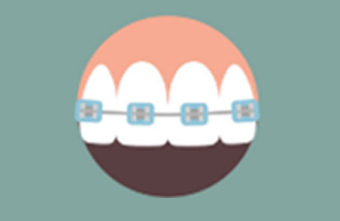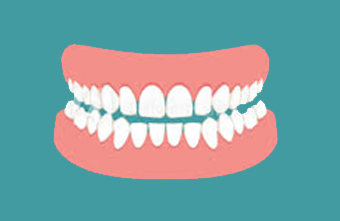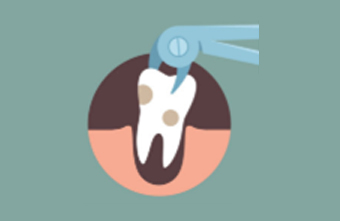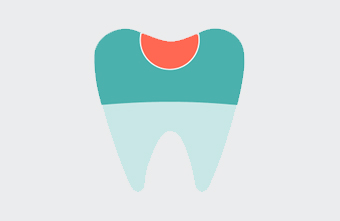
Orthodontics is the branch of dentistry that corrects teeth and jaws that are positioned improperly. Crooked teeth and teeth that do not fit together correctly are harder to keep clean, are at risk of being lost early due to tooth decay and periodontal disease, and cause extra stress on the chewing muscles that can lead to headaches, TMJ syndrome and neck, shoulder and back pain. Teeth that are crooked or not in the right place can also detract from one’s appearance.
The benefits of orthodontic treatment include a healthier mouth, a more pleasing appearance, and teeth that are more likely to last a lifetime.
How do I Know if I Need Orthodontics?
Only your dentist or orthodontist can determine whether you can benefit from orthodontics. Based on diagnostic tools that include a full medical and dental health history, a clinical exam, plaster models of your teeth, and special X-rays and photographs, an orthodontist or dentist can decide whether orthodontics are recommended, and develop a treatment plan that’s right for you.
Types of appliances
Fixed and Removable
Depending on the compliance of the patient and treatment needs, the orthodontist selects either fixed or removable appliances.
Fixed appliances are worn all the time and are indicated for treating moderate to severe mal-alignment. Brackets, bands and wires constitute fixed braces. Brackets can be made of metal, ceramic or plastic or combinations of these materials.
Removable appliances are indicated for mild deformities. This appliance can be removed by the patients.

Types of Braces
Traditional Metal Braces
Traditional metal braces are the most common type of braces and are more comfortable. Brackets are bonded to the teeth, arch wires are placed through the brackets and small elastic bands secure the wire in the bracket. Tightening the arch wire gradually, move the teeth into proper position.
These braces are adjusted every 4-6 weeks to bring about the desired results. Although a little discomfort is expected during the treatment, today’s braces are more comfortable than ever before. These braces are made of high grade stainless steel which are smaller, lighter and show far less metal than the past.
Ceramic braces
While they are visually less prominent, they do require more attention to oral hygiene as ceramic braces are larger and are more brittle than their metal counterparts. These brackets are expensive compared to the regular metal brackets as they are more esthetic i.e.; they are less conspicuous.
Self Ligating Braces
These are Brackets with a shutter or lock system and do not require the use of elastic to tie the wire. In comparison to traditional braces, self-ligating braces are more comfortable and smaller in size. These are helpful in achieving arch expansion and minimize the need for extraction.
Both traditional and self ligation (DAMON) braces achieve the same results, but the self ligation style is typically easier to tolerate.
The differences include:
Looks
With self ligation braces, elastic bands are eliminated and the braces are less obvious in their appearance.
How They Work
While both styles of orthodontic treatment get the same results, the way those results are achieved is different. Traditional braces uses a system in which you return to the orthodontist every four to six weeks to have them tightened for the teeth to move. Self ligation braces work by using tiny spring loaded door to maintain pressure on the archwires. This process applies pressure to the system to gently adjust the teeth to the desired position. Because of the new technology used in self ligation braces, the need for tightening is eliminated frequently.

Tooth Extractions
Many people who get traditional braces treatment must have several teeth removed in the process. This is to make enough room for crowded teeth. With self ligation braces teeth removal is not typically necessary. While in some cases extractions are needed, it is much less often than with traditional braces. In addition, the need for expanders and headgear is significantly reduced. This is due to the self ligation method using the body’s natural ability to adapt during the process.
Time Involved
Because self ligation braces don’t require tightening, the appointments throughout treatment are spaced further apart than with conventional treatment. In many cases actual time during the appointment is also shorter.
Length of The Treatment
Self ligating braces treatment typically lasts six months shorter than treatment with conventional braces. In addition, approximately fewer check-up appointments are required with this system.
The self ligation braces also help in maintaining the hygiene in an easier way as cleaning around the braces is much easy compared to traditional braces. With several advantages this latest system may be more expensive in treatment but helps the patient in reduction of treatment time and also requirement of tooth removal is minimised.
What are functional appliances ?
Dentofacial (jaw) growth discrepancies are often corrected using functional appliances.
CLASS II: When the lower jaw growth does not keep up with upper jaw growth, cervical pull or high pull headgear helps in reducing the problem.
CLASS III: Reverse pull headgear, facemasks and chin cups help when upper jaw growth does not keep up with lower jaw growth.

When do u need arch expansion?
Children who have crowded teeth and narrow arches require palatal expanders. The palatal expander is a device that is either permanently or temporarily placed into the upper arch and will gradually widen it enough to make room for the teeth.
A palatal expander is used for expanding narrow upper arch and normally used for six to eight months. After the device is inserted, either the parent or the orthodontist will expand the palate once or twice a day.
Palatal expanders broaden the upper arch and create a soft rounded “U” shape arch. This helps to make the smile attractive.

Lingual orthodontics
Lingual braces are placed behind the teeth in contrast to metal or ceramic braces which are applied to the front of your teeth. They are highly cosmetic alternative to those patients who otherwise would not consider treatment. Initially, the tongue becomes sore but the discomfort reduces as the treatment progresses





